With the increasing security threats to network resources, enterprises are required to follow standard practices, and execute internal/external security policies to remain compliant with the latest industry standards. Therefore, ensuring network configuration compliance has become a priority for network administrators. But, it is a mammoth task to scrutinize and make changes in a networking environment consisting of network devices from multiple vendors. Hence, you require a network configuration compliance tool to make the tasks hassle-free.
Network devices compliance management in Network Configuration Manager helps administrators analyse network devices to achieve auditable network compliance across industry-specific network compliance policies. Every time a configuration is backed up, Network Configuration Manager will automatically run a compliance check on those configurations. Network Configuration Manager also alerts and generates reports whenever a rule/policy gets violated.
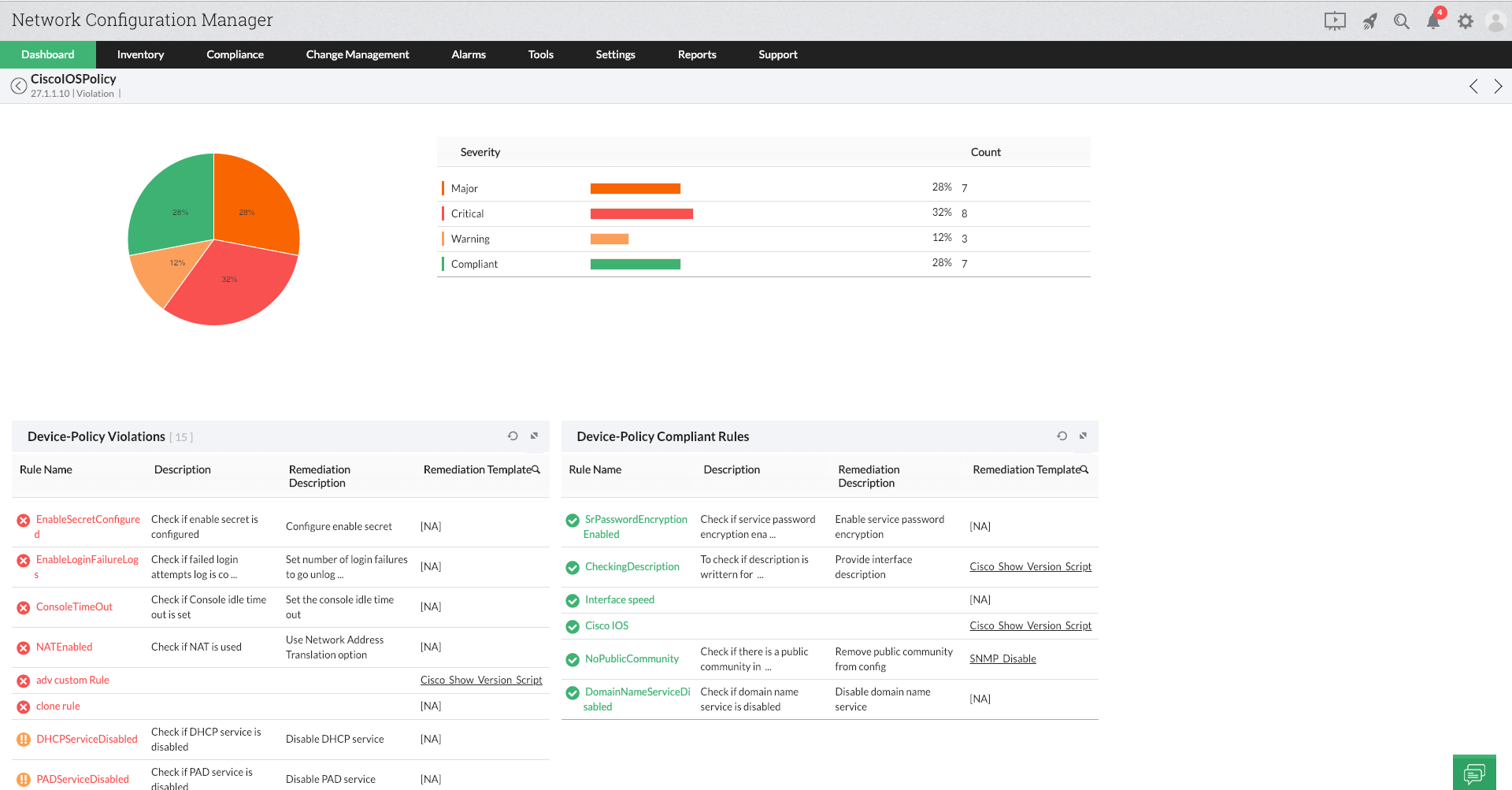
The CIS policy carries several rules that are exclusive for Cisco IOS and ASA devices.
Network Configuration Manager helps you to stay compliant to CIS standards by:
1. Executing CLI commands in configurations to fix network issues that affect the compliance of Cisco devices
2. Ensuring whether SNMP communities are protected with strong passwords
3. Adding access lists to prevent unauthorized configuration changes.
4. Carrying out compliance checks on configurations to meet admin requirements
5. Generating violation reports for auditing purposes
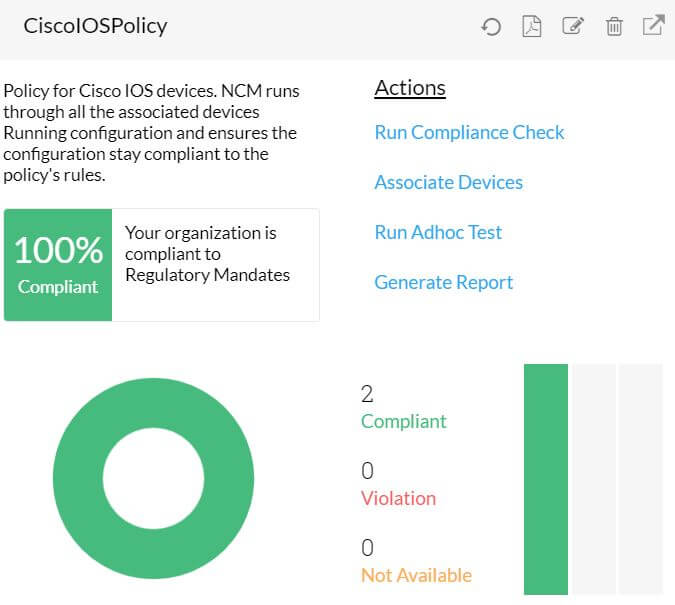
HIPAA protects health insurance coverage for workers by providing access control only to authorized personnels to access electronic protected health information (ePHI). This implies that, all the data related to your employees health insurance have to be access restricted and periodically monitored.
Network Configuration Manager helps you to stay compliant to HIPAA standards by:
1. Notifying and keeping a track of user activities on network devices.
2. Protecting employee data by providing access controls thereby achieving complete network compliancy.
3. Generating compliance report on network devices to show policy violation history.
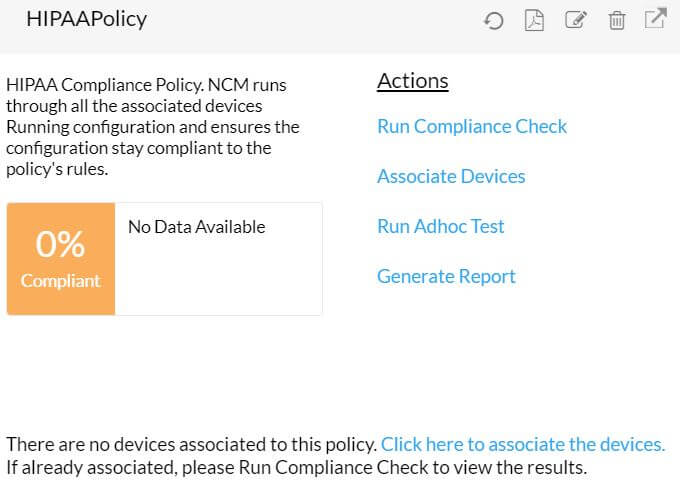
The Sarbanes-Oxley (SOX) protects shareholders and the general public from accounting errors, fraudulent practices in enterprises, and to improve the accuracy of corporate disclosures. This policy was incorporated to keep a check on how enterprises manage their internal controls. In a network environment, this translates to a policy where all the data stored should be enabled with access controls, proper and error-free installations of backup procedures, close scrutiny of configuration changes and data security.
Network Configuration Manager helps you to stay compliant to SOX standards by:
1. Auditing existing IT infrastructure, identifying inefficiencies, analyzing data storage period, and identifying redundancies to achieve network compliance.
2. Streamlining reporting and auditing processes to increase productivity and reduce cost.
3. Managing security risks more effectively and responding quicker in the event of a network breach.
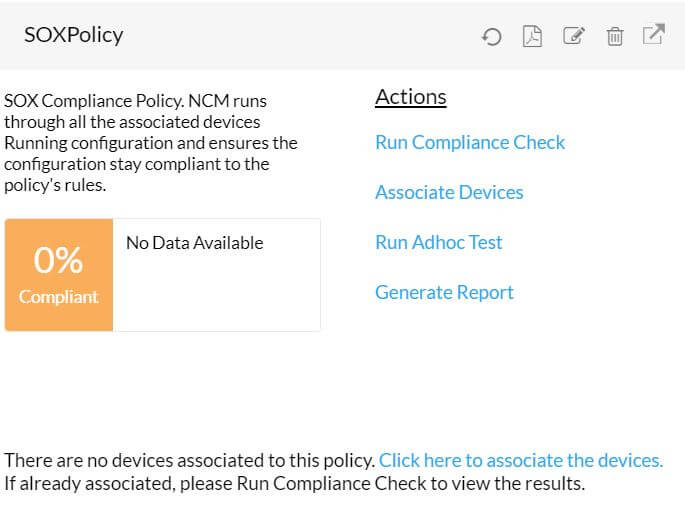
Payment Card Industry (PCI) is a set of security standards designed to ensure that all companies accept, process, store or transmit credit card information to maintain a secure environment. This policy helps to protect credit card information by data encryption, protection and access restriction methods.
Network Configuration Manager helps you to stay compliant to PCI in the following ways:
1. NCM Maintains/updates passwords on a regular basis.
2. NCM controls authentication processes on network devices to help secure credit card information.
3. Gives a detailed PCI report on network compliance for multiple devices/device groups.
Refer Network Configuration Manager's PCI for more details.
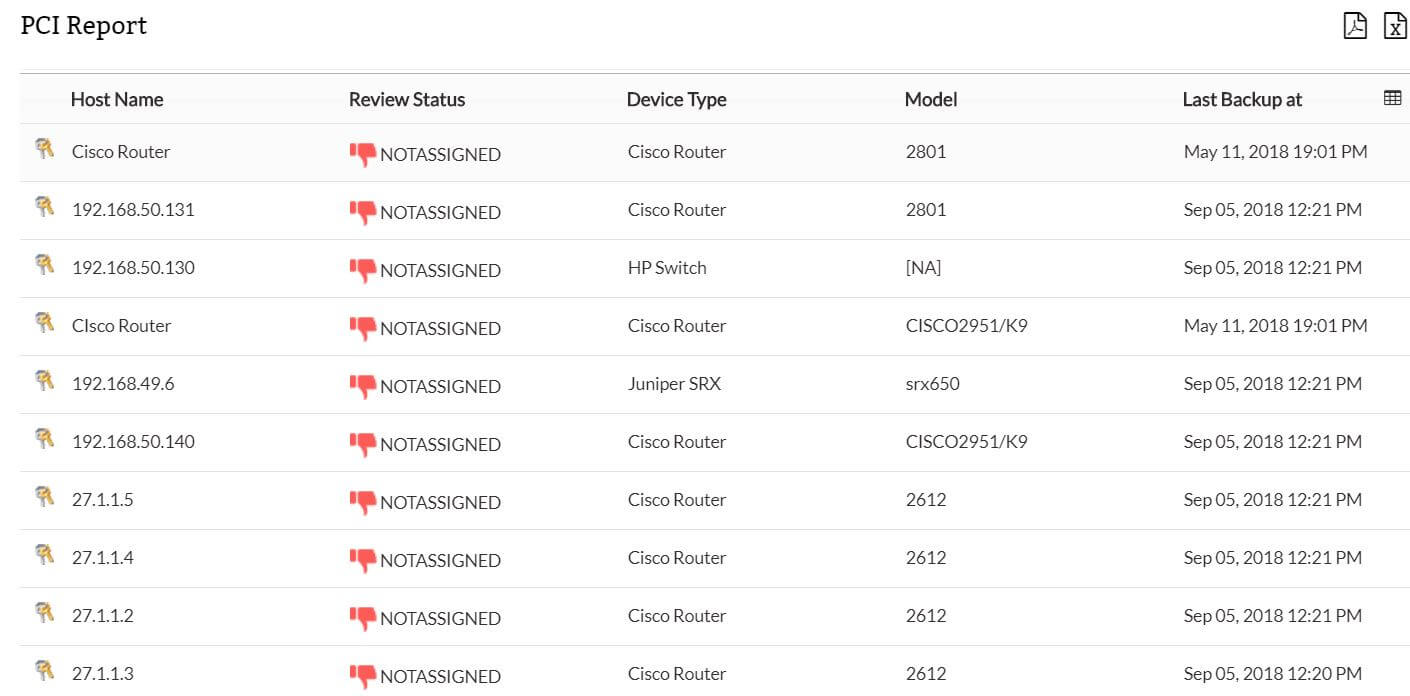
These compliance templates can be associated with devices/device groups and routine compliance checks can be run on the corresponding configuration files. Reports are generated whenever a rule is violated, making it easy for administrators to maintain compliancy in his networking environment.